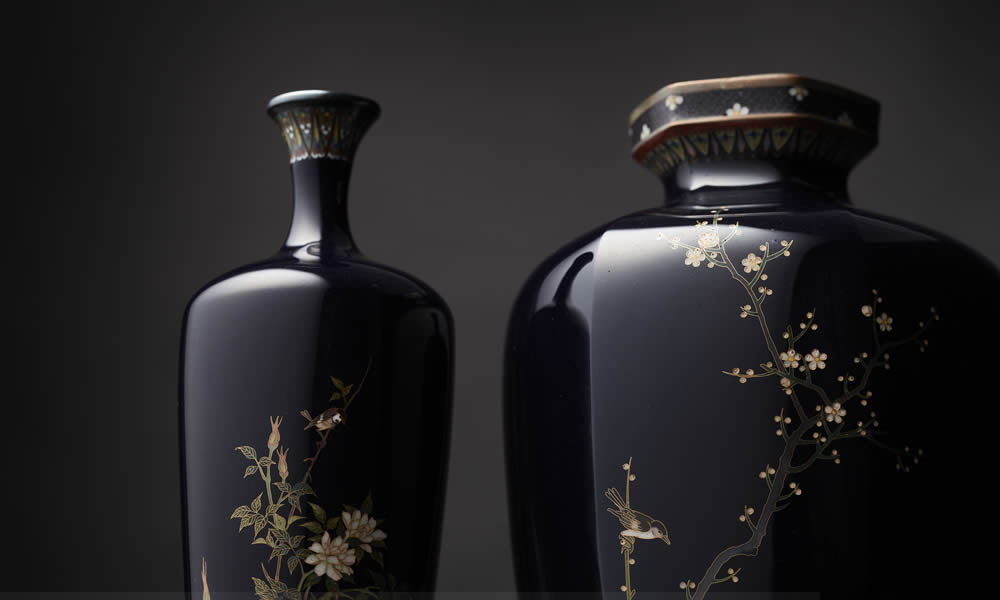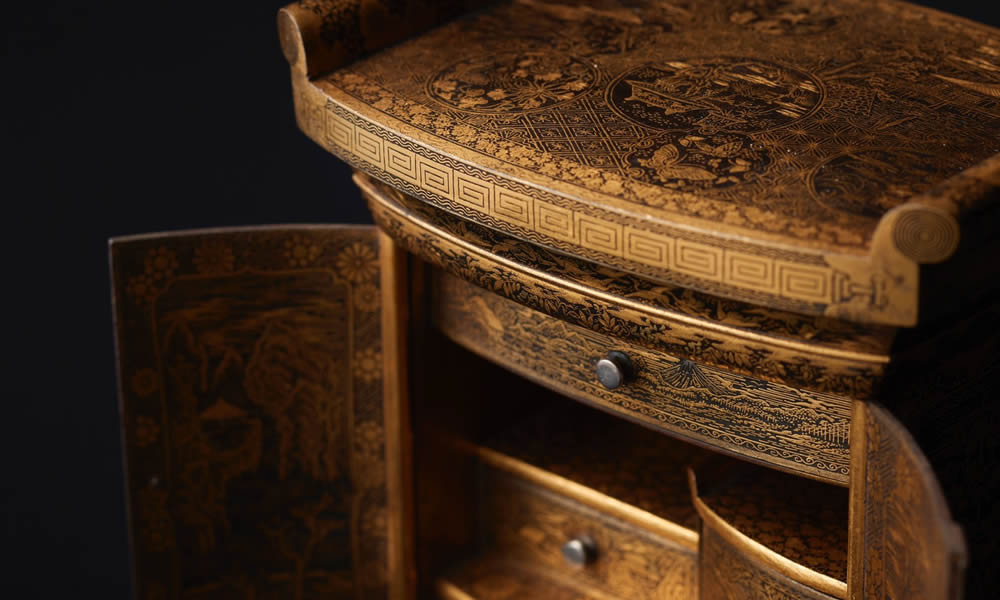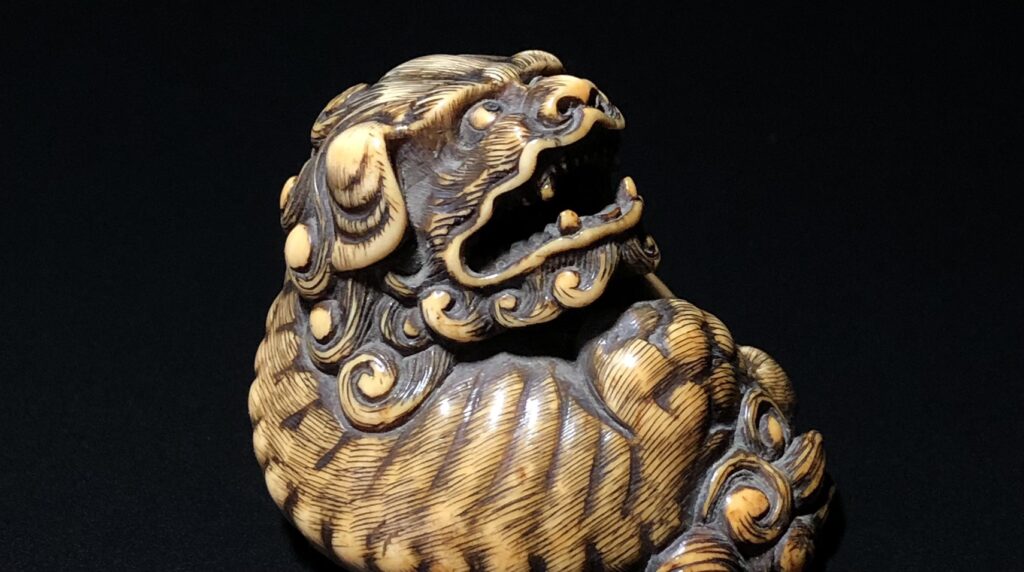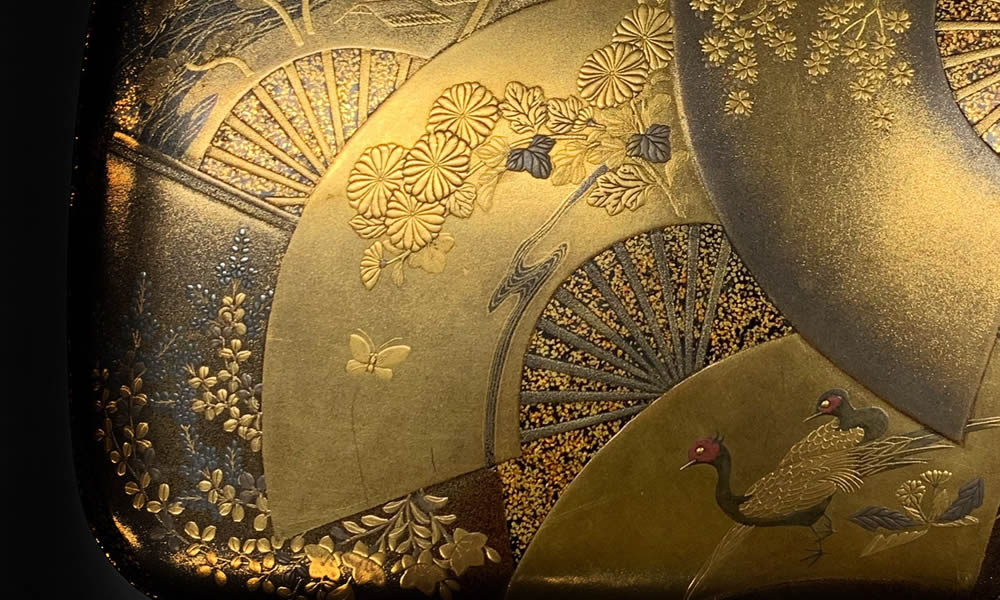Our items

薩摩 – SATSUMA –
Mondial Art (Japan)
Everyone admired and love its finely detailed art, and praised what seems its almost superhuman technique.
―――誰もが その精巧な芸術を愛し 恋焦がれた。人知を超えた技を賞賛した。
It is little known that kinrande (gold-painted) Satsuma ware were made in Kyoto in the Meiji Period by many pottery artists including Kinkozan. Yabu Meizan of Osaka and Seikozan of Kobe made them, as well. This is because in the Meiji Period, Satsuma ware were not made to be sold domestically. Most of them were made to be exported abroad.
“Hon-Satsuma” is a collective term for ceramics that had been made by Chin Jukan and other potters in the Satsuma domain (current Kagoshima Prefecture) from the Momoyama Period (1573-1603).
“Kyo-Satsuma” is a term for artwork made in the Kansai region, centered around Kyoto, by potters including Kinkozan of Kyoto and Yabu Meizan of Osaka.
Art pieces referred to as Satsuma and loved by the Westerners are mainly the latter, Kyo-Satsuma.
Savor the charm of Satsuma that captured the hearts of foreigners in the old days.
Traditional Techniques and Western Designs
It goes without saying that the allure of the Satsuma ware from the Meiji Period lies in its elaborateness. They are unmistakably ceramics with the most elaborate paintings in the world. Distinctive features of the Satsuma ware are the glitter of gold paint and vibrant color schemes.
Creative forms made to meet the aesthetics of the West show the trend of the time.
Traditional Japanese artifacts created by pursuing Western designs made available in the market were gems with complete cultural fusion.
We would be delighted if you would think about the historical background when appreciating artifacts.
The Background of the Prosperity of Satsuma Ware
The undeniable contributing factor to the flourishing of the Satsuma ware in the West is expositions.
The branding of Satsuma began when they received high appraisal at the Paris Expo held at the end of the Edo Period and the Vienna Expo held in 1873.
It was a time when Japanese art was trendy along with Indian and Chinese art, and the decoration of Japanese art was beginning to attract attention.
It can be said that Satsuma ware were artifacts that truly met the needs of the time.
The customer base extended from the bourgeoisie to commoners. Subsequently, as Japonism gained momentum, ceramics inspired by Satsuma ware began to be produced in France one after another.
In the recent years, “Exhibition on the Tradition and Beauty of Satsuma Ware That Captivated Paris” was held at The Sèvres National Ceramics Museum in France to commemorate the 140th anniversary of the first exhibition at an expo.

七宝 – Cloisonne Enamelware –
A new era is dawning.
The time is ripe and the wind is favourable for deepening the Japanese public’s knowledge of value of modern Enamel.
―――新たな時代の風が吹く。日本人が七宝の価値を知り、語る日が到来したのである。
Shippo is one of traditional artifact techniques employed to create metal-based pottery.
The technique of Shippo was born in Egypt and reached Japan via many countries along the Silk Road.The Shippo ware is called vitreous enamel in Chinese and enamel in English-speaking countries. In Japan, it is used for the Grand Cordon of the Supreme Order of the Chrysanthemum, the Order of Culture, accessories such as brooch and pendant, huge vases, and many other purposes.
The contemporary Shippo of Japan became widely known at the Paris Expo in 1867.
In 1873, the new Meiji government officially took part in the Vienna Expo and exhibited Shippo ware. Shortly after people around the world who visited the expo were mesmerized by its delicate techniques and exotic expressions, the Shippo pottery artists of Japan and their work of art came to be highly praised by art critics overseas.
Savor the beauty of Japanese Art that is being bid at auctions by collectors worldwide even today.
The Best of Shippo Ware Were Created in the Meiji Period
It is reputed that the prime of Shippo ware in Japan was the Meiji Period. As Shippo ware were created to be exported at the time, most of the masterpieces are abroad.
The reason behind this is because elegant and sophisticated minute expressions of the contemporary Shippo were at odds with the ancient aesthetics of Japan seen in wabi-sabi (beauty of humble simplicity, transience, and imperfection).
As a result, the study of contemporary Shippo in Japan is currently far behind that of Western countries.
Domestic museums that hold Shippo ware are Kiyomizu Sannenzaka Museum in Kyoto, Namikawa Cloisonne Museum of Kyoto, and Shippo Art Village in Aichi Prefecture. As most of them opened after year 2000, we can assume that the value of Shippo was acknowledged by the Japanese several decades ago.
Be sure not to miss your once in a lifetime encounters.
The world of Shippo attained the ultimate in gorgeous, elegant, and elaborate artifact that cannot be measured by the aesthetics of wabi-sabi.

金工 – Metalwork –
Show one’s genius
Master of the Late Edo and Early Meiji Ere. Their impact on the world of Japanese modern art is immeasurable.
―――幕末・明治の金工 彼らが日本の近代美術界に与えた衝撃は計り知れない
Metal craft is a type of artifact with chasing and incrustation made by utilizing the extensibility and dissolvability, which are distinctive features of metals.
Subsequently in the Meiji Period, a decree banned the wearing of swords. In keeping with the trends, popular sword decoration metal craft artists, such as Kano Natsuo, Unno Shomin, and Shoami Katsuyoshi, who were later appointed as Imperial Household Artists, began creating items other than sword decorations. They created new craftworks that can be used in daily lives, including incense burners, vases, containers with lids, and display ornaments. The designs that utilized the high level of skill and expressive powers of metal craft artists were highly praised overseas at expos held worldwide, and dazzled many of the collectors.
Then as industrialization advanced in Japan, works of art created with exceptional techniques began to lose its appeal.
Metal crafts of the Meiji Period are known as rare works of art in the contemporary art history, created in a short period of a little over 30 years.
Glasswork Artist Who Loved Metal Crafts
Louis C. Tiffany, a world-renowned jeweler and promoter of art nouveau, was known as a collector of Japanese sword ornaments. Sword ornaments from the Edo Period were significantly valuable, so much so that they were donated to The Metropolitan Museum of Art.

提物 – Ornaments –
Sagemono are a variety of goods, also called accessories, made to conveniently carry items such as smoking supplies. The term mainly refers to inro (compartmented cases for small objects), netsuke (ornamental pieces that hold cases in place), and tabako-ire (tobacco cases).
Sagemono had been used from around the Muromachi Period (1336-1573) mainly by men, but it was in the Bunka-Bunsei Period (1804-1830) that its crafting techniques fully matured and reached its peak due to long-lasting peaceful time that began in the Edo Period.
This was a time when many of inro maki-e (gold/silver lacquer) artists were active, including the Kajikawa and Koma families, who were official artists employed by the Tokugawa shogunate. Feudal lords and townsmen across the country paid handsome amounts for these small pieces of accessory and excited over them.
As for netsuke, well-crafted, elaborate, and humorous pieces were created across the nation by master craftsmen, such as Masanao of Kyoto, Tametaka, Kokusai, Morita Soko, and Kaigyokusai.
As lifestyle changed in the Meiji Period, people began to seek elegance rather than practicality in their design. Sword decoration artists, including Kano Natsuo, who later became a professor at Tokyo Fine Arts School, began creating mae-kanagu (metal ornaments for pouches) and ojime (cord fastener) in the Meiji Period and left pre-eminent works of art.
Furthermore, as the trend of tobacco case shifted from sage tabako-ire (hanging pouch) to koshisashi tabako-ire (pipe sleeve is tucked inside obi) in the Meiji Period, tabako-ire made by representative artisans of that time remain, as well. Distinguished craftsmen from the Meiji Period include: Takamura Koun, Suzuki Tokoku, Ozaki Kokusai, Ishikawa Komei, Shirayama Shosai, Kano Tetsuya, Zeshin, and Taishin.
Extraordinary, elaborate craftwork of sagemono, which are made with various materials, techniques, and craftwork, took many collectors around the world by surprise. They continue to gain attention at a number of museums, including The British Museum and the Museum of Fine Arts, Boston, even today.

漆芸 – Lacquerware –
A Period in Which Art Developed Significantly
The origin of Japanese lacquerware dates back as far as the Jomon Period (14,000–300 BCE). However, it was in the Asuka/Nara Periods (592-794) that the complete form of lacquerware came to be created. The maki-e technique was established by the Heian Period (794 and 1185), and Japanese lacquerware began to show its unique patina.
Later in the Kamakura Period (1185–1333), the technique of “taka maki-e (raised maki-e)” developed. As gifted craftsmen such as Ogata Korin and Ogawa Haritsu emerged over the Muromachi (1336-1573) and Edo Periods, what used to be just another genre of craftwork came to be highly regarded as a true form of art in which individuals can express their talents.
Western Cultures Led to New Ideas
Although the lacquerware in the Meiji Period were created with an array of techniques handed down from the Edo Period, how subjects were selected differed greatly from the old times. As high-end lacquerware with maki-e had lost its market in Japan, lacquerware artists sought opportunities abroad.
To gain recognition, especially in the Western European market, they proactively participated in world expos, broke away from old, traditional subjects, and came to employ new ideas.
Lacquerware is in a mark of attention.
Four of the “Imperial Household Artists” appointed on 13 occasions from 1890 to 1944 were lacquerware artists. The artists who received the honor were: Shibata Zeshin and his disciple, Ikeda Taishin, Kawanobe Iccho, and Shirayama Shosai.
Since the creation of elaborate artifacts always required years of time and effort, the inheritance of techniques was at a great risk in the whirlwind of industrial revolution.

その他 – Others –
Antiques are defined as “handicrafts, artifacts, and works of art that are 100 years old or older.”
Even if items look like pieces of junk at a glance, they are a rarity or have historical values.
We store and exhibit a variety of antiques. Antiques are distinctive in that they are one of a kind in the world and not mass-produced. If you are interested, please feel free to contact us.
